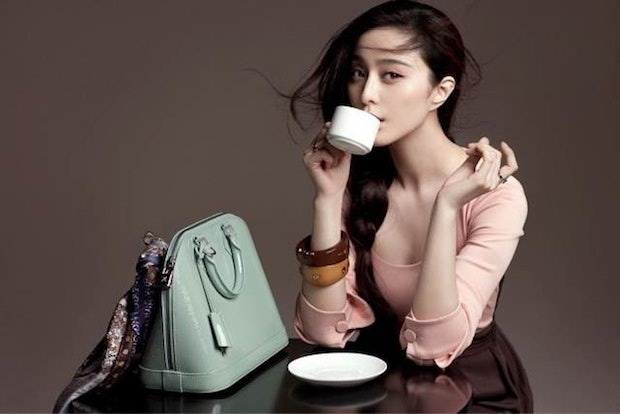New Strategies Emerge As Consumers' Preferences Evolve#

Fan Bingbing poses with a logo-free version of Louis Vuitton's Alma bag. The actress is an official Louis Vuitton brand ambassador. (Louis Vuitton)
According to a new Financial Times article, several experts believe that LVMH's less-than-impressive first-quarter growth numbers are due to the fact that the company underestimated the rate at which Chinese tastes would shift away from logo-heavy designs toward more understated looks.
When the conglomerate recently reported its first-quarter growth rate of three percent, the low number sparked industry worries that China's slowdown may be hitting luxury harder than anyone had predicted. However, as results from other luxury brands continued to roll in, it became clear that LVMH had performed much more poorly than others who saw less dramatic growth declines.
The article cites several reasons for the conglomerate's lagging China growth, all of which relate back to Chinese customers' evolving tastes.
First of all, Louis Vuitton's status as a "mega-brand" may actually be hurting it as demand shifts toward more niche labels. According to the article,
The risk for mega-brands, say analysts at HSBC, is of “ubiquity – the idea that the consumer seeing the same products everywhere starts to perceive a brand as being ‘too common’. In our view, the main victims of this theme are Louis Vuitton, Burberry and Gucci as customers from developed economies and even Chinese [principal] cities are less eager to buy logo products.”
Further exacerbating the issue was the fact that LVMH did not respond to this trend quickly enough, as opposed to rival PPR, which has successfully introduced Bottega Veneta to the Chinese market to make up for Gucci's slow growth.
Luca Solca, analyst at Exane BNP Paribas, likens the moves to the multi-layered strategy pursued by Mercedes, which introduced top-end and lower-end models around its mainstream E-class car.
The question is “will sophisticated consumers prefer to buy higher-end versions of mega-brands like LV in the future? Or will they rather buy ‘pure’ higher-end, niche brands like Hermès?” he asks.
Niche brands have grown strongly, including Goyard, PPR’s Bottega Veneta and LVMH’s Céline. Mr Arnault told shareholders that Céline was not on “the radar” five years ago but joked that now his daughter, Delphine, often sported the brand, despite her supposed allegiance to LVMH’s Christian Dior, where she is a director.
The problem, says Mr Solca, is that LVMH did not groom Céline to take over the relay from Louis Vuitton sooner, unlike PPR’s Bottega Veneta which has been growing strongly for a number of years, as the upmarket alternative to its Gucci brand.
The company is taking responsive action by limiting store numbers and introducing logo-free designs. In January, Louis Vuitton commissioned brand ambassador Fan Bingbing to promote a new set of "China-exclusive" leather, logo-free handbags that are dramatically different from the company's signature canvas logo style. In addition, its number of planned store openings has been scaled down in order to maintain exclusivity.
According to the article, the company is confident that its new strategies will pay off. “At the risk of shocking everyone, the [rate of] sales growth at Louis Vuitton is not a problem,” said LVMH Chairman and CEO Bernard Arnault at a shareholders' meeting, stating that slow growth was part of the company's "deliberate strategy" to become more exclusive.